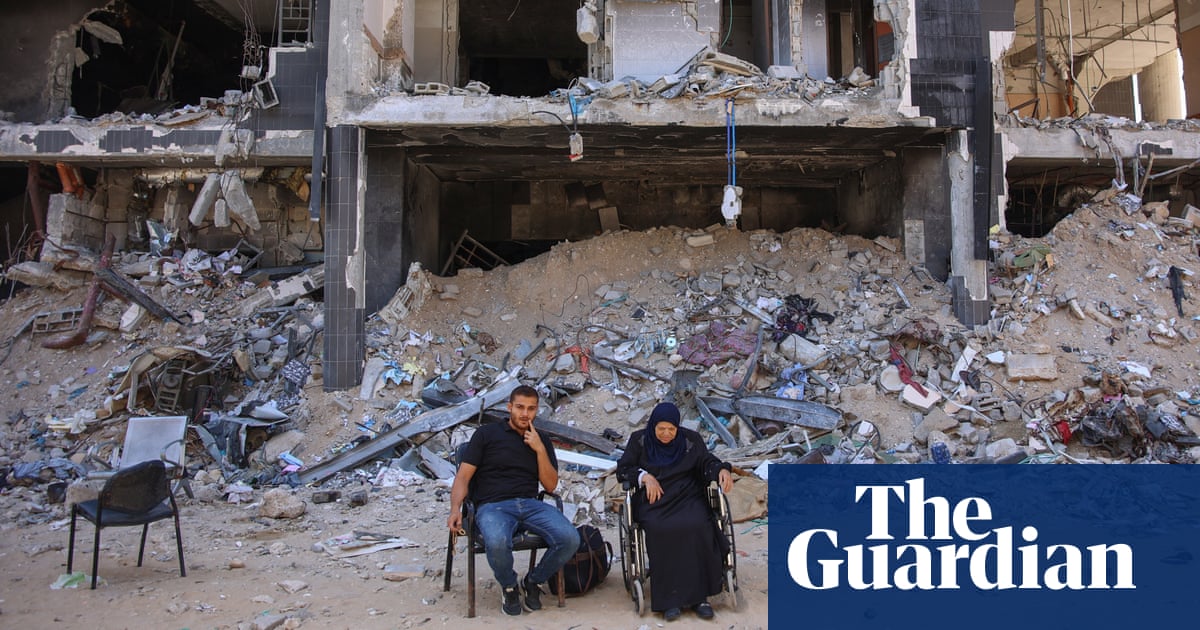British doctors who worked in Gaza during the war have issued dire predictions over the long-term health of Palestinian civillians, warning that large numbers will continue to die.
The prevalence of infectious disease and multiple health problems linked to malnutrition, alongside the destruction of hospitals and killing of medical experts, meant mortality rates among Palestinians in Gaza would remain high after the cessation of Israeli shelling.
British-Palestinian reconstructive surgeon, Prof Ghassan Abu-Sittah, who worked in al-Shifa and al-Ahli Arab hospitals in Gaza City shortly after the war began, said levels of malnutrition there were so acute that many children would “never recover”.
Scientists have estimated that the total deaths from Israel’s war on Gaza could ultimately be as high as 186,000. The figure is almost four times higher than the 46,700 deaths that Gaza’s Hamas-run health ministry have reported.
Prof Nizam Mamode, a retired British transplant surgeon from Hampshire who last year worked at Nasser hospital in southern Gaza said the number of “non-trauma deaths” could ultimately be considerably higher than 186,000. One factor, he said, was the targeting of healthcare workers during the war.
He said that of six vascular surgeons who once covered the north of the strip, just one had remained. There were no cancer pathologists left alive.
Abu-Sittah said entire teams of medical specialists had been eradicated from Gaza, and the training required to replace them would take up to 10 years.
“Certain specialities have been eviscerated,” he said. “There are no more nephrologists [a doctor specialising in kidney care] left. They’ve all been killed. There are no more board-certified emergency medicine physicians.”
The 55-year-old plastic surgeon from London said the long-term health of people in Gaza depended on how quickly the territory and its infrastructure were rebuilt.
Last week, thousands of Palestinians began returning to northern Gaza to scenes of utter destruction after the withdrawal of Israeli troops from a strategic corridor that divides the north and south of Gaza.
“But to get doctors to move back to the north, you need to house them. Where are they going to live? Where are their families going to live?” said Abu-Sittah.
He said irreversible damage had already been done to large numbers of children.
“Studies on people who survived the second world war showed they are more likely to get NCDs [non-communicable diseases] if they had malnutrition as children. They’re also more likely to become diabetics, more likely to have hypertension, more likely to have diabetes in old age. You don’t recover.”
Last month, the UN estimated that more than 60,000 children in Gaza would need treatment for acute malnutrition in 2025. Some had already died, said the organisation.
Another concern is the spread of disease, helped by the destruction of infrastructure such as sewage facilities.
Abu-Sittahhas provided evidence to Scotland Yard and the international criminal court over what he witnessed working in Gaza. He described the prevalence of disease there as a catastrophe.
“Hepatitis, diarrhoeal disease, respiratory disease, polio that re-emerged in the war, will all continue because there’s still no sewerage and clean drinking water, still no housing, no primary-care clinics. You’re not going to be able to stop, or even stem, infectious diseases.”
after newsletter promotion
He warned of the proliferation of drug-resistant bacteria, recounting an instance when six out of seven consecutive patients he saw had “multiple drug-resistant bacteria”.
In addition to the long-term impacts, he said 13,000 Gazans required immediate surgical interventions from war wounds. “The sheer number of complex injuries that need treatment means that it’s going to consume the health system for a generation,” he said.
Both doctors said the brutality and number of injuries they witnessed while working in Gaza was hard to overstate. Mamode, who gave evidence to MPs on the British parliament’s international development select committee inquiry into Gaza’s healthcare, said up to 70% of those he operated on were children.
“You’d have a three-year-old in intensive care for a week and we’d be told, ‘The parents are killed, the siblings are killed. Wait and see whether anyone is going to turn up for them.’ That was quite common.”
Abu-Sittah said that half of his patients were children and that despite working in numerous conflict zones including Iraq, Lebanon, Syria and Yemen, he had never performed as many amputations each day as he had in Gaza.
Mamode, a former clinical lead of transplant surgery at Guy’s and St Thomas’ NHS Foundation Trust in London, warned that another vital long-term health issue was the psychological scarring on a population after 15 months of fighting.
“In the coming months, those issues will start to come to the fore, because people have just been focusing on day-to-day survival. When that pressure comes off [the psychological impacts] are going to manifest themselves in all sorts of ways.”
A spokesperson for the Israeli Defence Force (IDF) said it had been “well documented that Hamas uses hospitals and medical centres for its terror activities”.
They added: “If not stopped, under certain conditions, this illegal military use can make the hospital lose its protection from attack.”
Article by:Source: Mark Townsend













